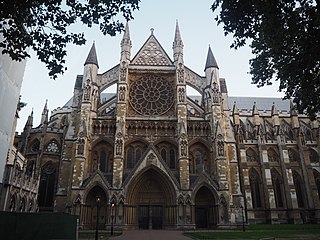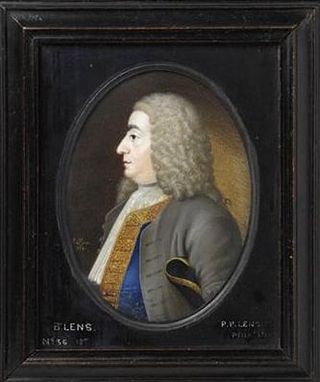Related Research Articles

Charles Wesley was an English leader of the Methodist movement. Wesley was a prolific hymnwriter who wrote over 6,500 hymns during his lifetime. His works include "And Can It Be", "Christ the Lord Is Risen Today", "Love Divine, All Loves Excelling", the carol "Hark! The Herald Angels Sing", and "Lo! He Comes With Clouds Descending".

Nicholas Rowe, English dramatist, poet and miscellaneous writer, was appointed Poet Laureate in 1715. His plays and poems were well-received during his lifetime, with one of his translations described as one of the greatest productions in English poetry. He was also considered the first editor of the works of William Shakespeare.

James Harris, FRS was an English politician and grammarian. He was the author of Hermes, a philosophical inquiry concerning universal grammar (1751).

John Philips was an 18th-century English poet.

John Raphael Smith was a British painter and mezzotinter. He was the son of Thomas Smith of Derby, the landscape painter, and father of John Rubens Smith, a painter who emigrated to the United States.

Matthew Wren was an influential English clergyman, bishop and scholar.

White Kennett was an English bishop and antiquarian. He was educated at Westminster School and at St Edmund Hall, Oxford, where, while an undergraduate, he published several translations of Latin works, including Erasmus' In Praise of Folly.
James Anderson was a Scottish writer and minister born and educated in Aberdeen, Scotland. He was ordained a minister in the Church of Scotland in 1707 and moved to London, where he ministered to the Glass House Street congregation until 1710, to the Presbyterian church in Swallow Street until 1734, and at Lisle Street Chapel until his death. He is reported to have lost a large sum of money in the South Sea Company crash of 1720. Anderson is best known for his association with Freemasonry.

Edward Stanton (1681–1734) was an English stonemason, builder and sculptor.
Thomas Cotes was a London printer of the Jacobean and Caroline eras, best remembered for printing the Second Folio edition of Shakespeare's plays in 1632.

George Faulkner was one of the most important Irish publishers and booksellers. He forged a publishing relationship with Jonathan Swift and parlayed that fame into an extensive trade. He was also deeply involved with the argument over copyright infringement and piracy, both creating and fighting "Irish editions".
Motte v Faulkner was a copyright lawsuit between Benjamin Motte and George Faulkner over who had the legal rights to publish the works of Jonathan Swift in London. This trial was one of the first to test the Statute of Anne copyright law in regards to Irish publishing independence. Although neither held the copyright to all of Swift's works, the suit became a legal struggle over Irish rights, which were eventually denied by the English courts. Faulkner, in 1735, published the Works of Jonathan Swift in Dublin. However, a few of the works were under Motte's copyright within the Kingdom of Great Britain, and when Faulkner sought to sell his book in London, Motte issued a formal complaint to Jonathan Swift and then proceeded to sue Faulkner. An injunction was issued in Motte's favor, and the book was prohibited from being sold on British soil. The basis of the law protected the rights of the author, and not the publisher, of the works, and Swift was unwilling to support a lawsuit against Faulkner. With Swift's reaction used as a basis, the lawsuit was later seen as a struggle between the rights of Irishmen to print material that were denied under English law.
Benjamin Motte was a London publisher and son of Benjamin Motte, Sr. Motte published many works and is well known for his publishing of Jonathan Swift's Gulliver's Travels.

Bernard Lens III was an English artist known primarily for his portrait miniatures. Lens was the miniature painter at the courts of kings George I and George II, instructor in miniature painting to prince William and princesses Mary and Louise and consultant in fine arts to upper-class families.
John Ayres, an English author, scribe and publisher.

Samuel Johnson Birthplace Museum is a biographical museum and bookshop located in the centre of the city of Lichfield, Staffordshire, in England. The building is a Grade I listed building situated at the corner of Market Street and Breadmarket Street opposite the market square.
John Baskett (1664/5–1742), was the King's Printer for England. His sons, Thomas and Robert, and grandson by the latter, Mark, were also engaged in the press. By purchasing reversion of the King's Printer position, Baskett kept it in the family for the following generation.
Samuel Williams was a British draughtsman and wood-engraver.
Benjamin Rosewell (c.1665–1737) was a master shipwright at Harwich, Plymouth, Chatham and Sheerness Naval Dockyards, and Governor of Hawkins Hospital, Chatham.
References
- Harris, James. Diaries and Correspondence of James Harris, First Earl of Malmesbury. Elibron Classics , 2001.